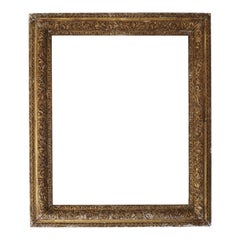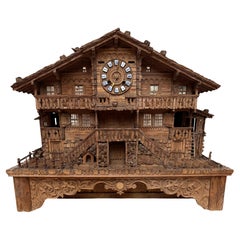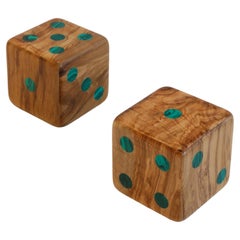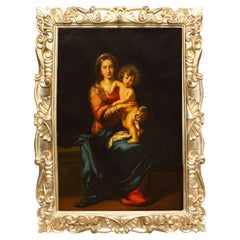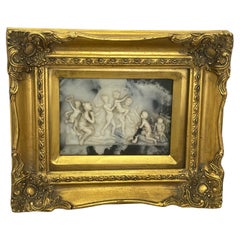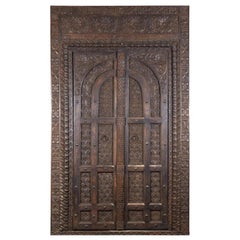Carved Decorative Art
Late 18th Century English George III Antique Carved Decorative Art
Giltwood
Late 19th Century Swiss Black Forest Antique Carved Decorative Art
Brass, Iron, Enamel
2010s Colombian Carved Decorative Art
Malachite
1910s Italian Baroque Vintage Carved Decorative Art
Canvas, Giltwood
1950s German Arts and Crafts Vintage Carved Decorative Art
Metal
Late 18th Century Italian Rococo Antique Carved Decorative Art
Oak
1920s Italian Art Deco Vintage Carved Decorative Art
Wood
1950s American Mid-Century Modern Vintage Carved Decorative Art
Rattan, Wood
19th Century French Neoclassical Antique Carved Decorative Art
Wood, Giltwood
21st Century and Contemporary Italian Carved Decorative Art
Crystal, Stainless Steel
Early 20th Century Victorian Carved Decorative Art
Hardwood
Late 19th Century Congolese Primitive Antique Carved Decorative Art
Wood
Early 20th Century French Arts and Crafts Carved Decorative Art
Wood, Pine
18th Century Italian Baroque Antique Carved Decorative Art
Canvas, Giltwood
1960s North American Mid-Century Modern Vintage Carved Decorative Art
Walnut, Stoneware, Pottery, Clay, Ceramic
1910s Italian Baroque Vintage Carved Decorative Art
Canvas, Giltwood
Late 18th Century Italian Rococo Antique Carved Decorative Art
Walnut
1950s German Black Forest Vintage Carved Decorative Art
Wood
19th Century French French Provincial Antique Carved Decorative Art
Pine
19th Century French Antique Carved Decorative Art
Wood, Giltwood, Lacquer
Mid-18th Century French French Provincial Antique Carved Decorative Art
Brass, Bronze
19th Century French Rococo Revival Antique Carved Decorative Art
Canvas, Giltwood
20th Century African Tribal Carved Decorative Art
Wood
Early 19th Century Chinese Chinese Export Antique Carved Decorative Art
Wood
Late 19th Century German Baroque Antique Carved Decorative Art
Gesso, Canvas, Wood
17th Century Peruvian Antique Carved Decorative Art
Wood, Paint, Giltwood
Late 19th Century Italian Classical Roman Antique Carved Decorative Art
Wood, Paper
Early 20th Century Burmese Art Deco Carved Decorative Art
Wood, Giltwood
18th Century Swedish Gustavian Antique Carved Decorative Art
Pine
Mid-20th Century Danish Scandinavian Modern Carved Decorative Art
Pottery, Ceramic, Stoneware
Late 19th Century Italian Baroque Antique Carved Decorative Art
Canvas, Giltwood
Late 19th Century French Antique Carved Decorative Art
Canvas, Giltwood
Early 20th Century English Victorian Carved Decorative Art
Brass
Early 20th Century European Arts and Crafts Carved Decorative Art
Metal, Brass
Late 18th Century Antique Carved Decorative Art
Gold Leaf
Late 18th Century French Chinoiserie Antique Carved Decorative Art
Canvas, Giltwood
Early 20th Century German Folk Art Carved Decorative Art
Wood, Paper
Early 19th Century French Louis XV Antique Carved Decorative Art
Canvas, Giltwood
Mid-20th Century Congolese Tribal Carved Decorative Art
Rattan, Wood
16th Century Belgian Gothic Antique Carved Decorative Art
Oak
Late 19th Century French Antique Carved Decorative Art
Canvas, Giltwood
1880s French Black Forest Antique Carved Decorative Art
Wood
20th Century Spanish Neoclassical Revival Carved Decorative Art
Walnut
18th Century Swedish Gustavian Antique Carved Decorative Art
Glass, Mirror, Giltwood
Early 20th Century French Carved Decorative Art
Bronze
21st Century and Contemporary Croatian Organic Modern Carved Decorative Art
Wood, Walnut
Early 20th Century German Black Forest Carved Decorative Art
Oak
Late 17th Century Portuguese Baroque Antique Carved Decorative Art
Pine, Giltwood
1890s Tibetan Tibetan Antique Carved Decorative Art
Wood
21st Century and Contemporary Italian Modern Carved Decorative Art
Stone, Marble, Copper
Late 19th Century French Napoleon III Antique Carved Decorative Art
Metal
Mid-20th Century Polish Scandinavian Modern Carved Decorative Art
Ceramic, Pottery
17th Century Belgian Gothic Antique Carved Decorative Art
Oak
1850s French French Provincial Antique Carved Decorative Art
Mother-of-Pearl
1890s English Late Victorian Antique Carved Decorative Art
Canvas, Wood, Giltwood
Early 1900s French Art Nouveau Antique Carved Decorative Art
Fruitwood
1880s Austrian Belle Époque Antique Carved Decorative Art
Wood, Giltwood
Late 19th Century Italian Baroque Revival Antique Carved Decorative Art
Canvas, Wood
19th Century European Neoclassical Antique Carved Decorative Art
Lava
Late 19th Century English Folk Art Antique Carved Decorative Art
Wood
Read More
At Colonial Williamsburg, Everything Old Is New Again
With the help of a new director, the Virginia institution's folk art and decorative arts museums are undergoing extensive upgrades.
New York’s Hirschl & Adler Showcases the American Workmanship and Design Panache of Neoclassical Treasures
The gallery's latest exhibition proves that museum-quality pieces entice and inspire, whether in traditional or more modern interiors.
